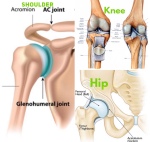
Happy New Year 2021


Being an advocate for bone and joint pain and personally living with osteoarthritis osteonecrosis and spondylolisthesis pain .
I saw our community struggle in new and ways besides living and dealing with daily pain.
People suddenly couldn’t access routine care because of lockdowns, fear and added anxiety.
They became more isolated than ever before. They and their family members faced job losses and financial hardship.
As an advocate for arthritis and a facilitator for my local LIVE YES Connect Group, I had to cancel or postpone in-person programs and events.
But on the plus side we went virtual on Zoom
Some members and their families faced added strain, whether dealing with virtual school or safety concerns for loved ones in nursing homes.
It’s a year most are happy to see come to an end.
But as a person with pain, I am always compelled to find silver linings. Even in the mist of challenging of times.
In 2020, I got to travel to Washington D.C participate in a focus group and then speak on Capital Hill.
I met some fantastic people from our state representatives to other leaders and advocates who work so hard to create a strong support system for so many causes and conditions.
I got to stay in a great city and tour the beautiful historical city of Washington D.C
We made great strides in accessibility, as health care system finally embraced telehealth and more companies allowed remote work.
Many disabled now gave hope to possibly getting a part time job working from home now because we see it is doable.
We seen a President work tirelessly to get pharmaceutical companies to create a vaccine quickly that will be safe for the USA and world.
We gave witnessed the power of science and innovation with the development of promising treatments and vaccines.
We saw our neighbors and communities come together to support one another in their time of need.
Despite the news only showing negativity there was a lot of positive happening.
2020 shown how resilient we are. And to never lose faith. Be grateful for everyday.
I don’t know what 2021 will bring;
I’m hoping it will be a fantastic year.
I just want to Thank you for your support, and following me on IG, Blog, and all social media platforms I promise to bring you current and uplifting information in 2021 and I wish you all a safe, healthy, prosperous and happy new year


Several states have officially proclaimed today as Osteonecrosis awareness day this past year a few more states came on the awareness train. And by next year God willing all 50 state’s as well as the US Virgin Islands and Puerto Rico will as well.
I will post the entire list later
But for now – Below are some posts and info
https://avascularnecrosiseducation.com/2020/05/24/avascular-necrosis-mask/amp/
https://avascularnecrosiseducation.com/tag/educate/
Official Proclamation Avascular Necrosis-Osteonecrosis Awareness Day November 29
Question
Could you elaborate on how osteoarthritis can be a secondary condition to avascular necrosis? And how can avascular necrosis adversely affect a confirmed primary diagnosis of osteoarthriris?
That a great question and I will explain both with diagrams
Answer
Osteoarthritis and osteonecrosis (avascular necrosis) are two diferent problems. Osteoarthritis occurs with when the cartilage wears thin and degrades. It is thought to primarily a cartilage problem although recently some investigators have raised the theory that collapse of bone at the cartilage interface may also contribute.
Osteonecrosis occurs when the bone does not get enough blood supply and dies. This occurs most commonly after trauma to the joint injury, to say meniscus or a diver gets the bends . Patients with certain blood disorders, patients with lupus or those who are taking high doses of prednisone are also at risk for osteonecrosis.
The confusion comes when a joint is so badly degenerated or “at its endstage”.
So at that point it is often impossible to distinguish between the two problems.

There are many causes for developing Osteonecrosis aka Avascular Necrosis.

Osteonecrosis is a bone disease. It results from the loss of blood supply to the bone. Without blood, the bone tissue dies. This causes the bone to collapse. It may also cause the joints that surround the bone to collapse. If you have osteonecrosis, you may have pain or be limited in your physical activity.
Osteonecrosis can develop in any bone, most often in the:
It is also called:

Osteoarthritis is a joint disease that happens when the tissues in the joint break down over time. It is the most common type of arthritis and is more common in older people.
People with osteoarthritis usually have joint pain and, after rest, stiffness (inability to move easily) for a short period of time. The most commonly affected joints include the:
Osteoarthritis affects each person differently. For some people, osteoarthritis does not affect day-to-day activities. For others, it causes significant pain and disability.
#WEGOHealthChat #WEGOHealthAwards #PatientLeader #Osteoarthritis #Osteonecrosis #Grateful
ChronicallyGratefulDebla and https://avascularnecrosiseducation.com
Voting will begin in July and link will be posted then to vote.
Until then if you wish to nominate me or read about WEGOHealth please go to
WEGOHealthAwards Vote – Review Nominees – How It Works -The Judges
Many requested masks as so many cannot find them , so I contacted a local shop in my area and we made these two designs. The mask are washable
I don’t get paid anything for or a portion of the masks just doing this as a way to help those wearing a mask support the cause of Osteonecrosis aka Avascular Necrosis.
If you wish to purchase here is info. And they ship worldwide
They are closed on Sundays and Holidays

Afterburner FX
3600 Schotten Road
Hubbard Ohio 44425
3305347653 phone
Mask design
@Debla2020

The site is for entertainment and informational purposes only and does not provide medical advice or treatment.

Consult your physician before adding or omitting anything to your daily regimen.
1. What is Cat’s Claw?
Cat’s claw is a medicinal herb made from the vine, roots, and bark of the cat’s claw plant. Found in South America, the plant’s popular name comes from its claw-shaped thorns. Research points to many immune system-boosting compounds that promote the relief of many types of ailments.
Native to the Amazon rainforest, and can be traced back to Inca civilization Cat’s Claw (Uncaria tomentosa) has been used for centuries by indigenous people and herbalists for medicinal preparations to address health concerns such as asthmas, arthritis, rheumatism, urinary and kidney problems, and inflammation. In modern herbal medicine, Cat’s Claw is often recommended for chronic illnesses such as fibromyalgia, chronic fatigue, mononucleosis, as well as arthritis.
A potent antioxidant and anti-inflammatory botanical, Cat’s Claw is used to treat joint problems that occur with osteoarthritis and rheumatoid arthritis.
In a small clinical trial, Cat’s Claw was shown to decrease pain in patients with rheumatoid arthritis, as well as osteoarthritis of the knee. The medicinal benefits of Cat’s Claw come from chemicals called pentacyclic oxindole alkaloids, which boost the immune system and help temper inflammation.
The concentration of medicinally active chemicals in Cat’s Claw vary based on when and how the plant is harvested.
A holistic health physician will be knowledgeable about a product’s purity and potency, as well as which form of Cat’s Claw supplement is best for you. For example, your physician may suggest tea, tincture, extract or capsule depending upon your health concerns.
Some people experience upset stomach, headache or dizziness when using Cat’s Claw.
Also, it is not recommended for women who are pregnant or nursing, or for children under age three.
Unlike some natural medicines, the reputation of cat’s claw as a wide-ranging remedy is now wholly validated by science. Though not usually recommended in combination with other medicines, the health benefits of cat’s claw are vast.
Resources
Johnson, R.L., S. Foster, Low Dog, T. and Kiefer, D. National Geographic Guide to Medicinal Herbs: The World’s Most Effective Healing Plants. (2012) pp. 204-207. Washington, D.C.: National Geographic.
Yasuda, G., et al., “Rheumatoid Arthritis” in Textbook of Natural Medicine by Pizzorno, Joseph E. & Michael T. Murray. (Chapter 205, p 1769). (2013) St. Louis, MO Elsevier.
Mur E, Hartig F, Eibl G, Schirmer M. “Randomized double blind trial of an extract from the pentacyclic alkaloid-chemotype of uncaria tomentosa for the treatment of rheumatoid arthritis.” J Rheumatol. (2002 Apr) 29(4):678-81. Accessed 22 Apr 2018.
Arthritis Research Center-UK. “Cat’s Claw.” Accessed 22 Apr 18
Right now, we are all trying to live through these difficult times. We are forced to stay at home, some of my friends and family are now working from home, not visiting with family or friends many now are faced with home schooling their children and kids missing many special events graduation, dance recitals, prom, sports and parties.
They talk on the news about our new normal where we will have to not wear face masks then yes we are told to wear face masks, continuously wash our hands, don’t touch your face
If we dare to venture out most likely we will be at least six feet apart from others whether we are dinning out, getting a haircut, or even attending church.
Since wearing these masks I suffer from headaches, if I have to run errands and am gone for a few hours by the time I’m done, I have a headache. And explosive headache, I swear it’s because I’m breathing in carbon dioxide vs good oxygen.
Many now understand what it’s somewhat like to live with chronic pain or illness.
Often isolated.
Very little socializing, not working limiting your time out. Getting everything done in a day. Thankfully they don’t also have to live with chronic pain.
When we live with pain, much of what applies to the stay-at-home orders that are in place is exactly what it is like when pain invades one’s life.
To help through this difficult time of isolation, and for many increased pain, here are a few ideas you might want to think about:
Staying active:With many gyms and rehabilitation facilities closed, we need to find different ways to exercise so that we do not lose what we have worked so hard to achieve.
Sleep: because many of us are not as active during the stay-at-home order, you may find it more difficult to fall sleep and stay asleep.
Meals and Eating Healthy : This is the time to test your skills in the kitchen while you keep an eye on your weight
If you have to work from home I know you may feel closed in a bit more.
I always enjoyed that feeling when my day was over and just got home.
Working from home:
Finally : Home schooling the kiddos Many of you find you are now the teacher

Some individuals get ONJ
Osteonecrosis of the jaw, commonly called ONJ, occurs when the jaw bone is exposed and begins to starve from a lack of blood. Most cases of osteonecrosis of the jaw happen after a dental extraction. … ONJ is much more common in those patients who use these medications for cancer of the bone treatment.
Most patients with ONJ who are taking antiresorptive therapy for osteoporosis can be healed with conservative treatment. Surgery is not usually required and could contirbute to the poor bone healing.
Good oral hygiene and regular dental care is the best way to lower the risk of ONJ
ONJ is associated with cancer treatments (including radiation), infection, steroid use, or antiresorptive medications used for osteoporosis. Examples of antiresorptive medications include bisphosphonates such as alendronate (Fosamax); risedronate (Actonel and Atelvia); ibandronate (Boniva); zoledronic acid (Reclast), and denosumab (Prolia).
ONJ is much more common in those patients who use these medications for cancer of the bone treatment. When used for osteoporosis in much lower doses, it is very rare.
While ONJ is associated with these conditions, it also can occur without any identifiable risk factors.
Osteonecrosis of the jaw is a condition in which an area of jawbone is not covered by the gums, a condition of poor healing. The condition must last for more than eight weeks to be called ONJ. When the bone is left uncovered, it does not receive blood and begins to die. ONJ most often develops after an invasive (surgical) dental procedure such as dental extraction. ONJ also may occur spontaneously over boney growths in the roof or inner parts of the mouth.
ONJ has occurred in patients with herpes zoster virus infections, in those who are undergoing radiation therapy of the head and neck (radiation osteonecrosis), osteomyelitis (bone infection), and in persons taking steroid therapy chronically.
Patients taking antiresorptive medications to reduce their risk of bone fracture also may rarely experience ONJ. Why some patients taking antiresorptive medications get ONJ is unknown. It may be due to a decrease in the bone’s ability to repair itself; a decrease in blood vessel formation; or possible effects of infection.
There is no diagnostic test to determine if an individual patient is at increased risk for ONJ, but some factors are known to raise the risk in very rare circumstances. The condition itself is diagnosed only by the presence of exposed bone, lasting more than eight weeks. Patients typically complain of pain, which is often related to infection, soft tissue swelling, drainage, and exposed bone.
Most patients with osteoporosis who develop ONJ are treated conservatively with rinses, antibiotics, and oral analgesics. Studies have shown conservative treatment to be effective. There are case reports of the use of teriparatide in management of ONJ.
Rheumatologists are specialists in musculoskeletal disorders including osteoporosis and therefore are best qualified to review the risks and benefits of antiresorptive therapy for osteoporosis. They can also advise patients about the best treatment options available.
A health program of oral hygiene and regular dental care is the optimal approach for lowering osteonecrosis of the jaw risk. Patients should inform their dentists that they are taking potent antiresorptive therapy, such as alendronate (Fosamax), risedronate (Actonel and Atelvia), ibandronate (Boniva), zoledronic acid (Reclast) or denosumab (Prolia).. Dentists should consider conservative invasive dental care in patients taking potent antiresorptive therapies.
For instance, endodontic (root canal) treatment is preferred to dental extraction if the tooth can be saved. If dental extraction is needed, full mouth dental extractions or periodontal surgery should be avoided. (It may be better to assess healing by doing individual extractions.)
Patients with periodontal disease should consider non-surgical therapy before agreeing to surgical treatment. Many patients taking bisphosphonates may undergo dental implants without problems. Although some dentists recommend the use of blood tests to decide who is at risk, this practice is controversial due to a very limited evidence base and should not be used at this time.This is in agreement with current American Dental Association suggestions.
Those on oral bisphosphonates are at low risk for ONJ. If patients detect any mouth pain or problems, they should seek dental care right away. It is not necessary to stop bisphosphonate use before a dental procedure, but it may be best to delay starting the drug therapy until after a scheduled dental procedure.
**Osteoradionecrosis is bone death due to radiation. The bone dies because radiation damages its blood vessels.
Osteoradionecrosis is a rare side effect that develops some time after radiation therapy has ended. It usually occurs in the lower jaw, or mandible. The lower jaw is at risk of osteoradionecrosis because it has a limited blood supply. Very rarely, osteoradionecrosis can start in the upper jaw, or maxilla.
Doctors usually classify osteoradionecrosis based on what tissue it affects, if it responds to treatment and if it has caused a fracture. They give osteoradionecrosis a grade from 1 to 3, usually as a Roman numeral (I, II or III). They use these grades to plan treatment.

Osteoradionecrosis is caused by radiation therapy to the bone. It may develop years after radiation therapy for head and neck cancers.
The risk of developing osteoradionecrosis increases when the dose of radiation received is greater than 60 grays. It is also higher if the bone treated with radiation is exposed.
There is also a higher risk of developing osteoradionecrosis if a dental exam and necessary dental repairs aren’t done before radiation therapy. People with poor oral hygiene before or after radiation therapy are also at higher risk. So are people who develop dry mouth after radiation therapy.
Damage or trauma to the jaw after radiation therapy, especially within the first year after treatment, can also increase the risk for osteoradionecrosis. Damage or trauma can be caused by:
In rare cases, osteoradionecrosis may develop even if there isn’t any trauma or damage to the mouth, teeth or jaw.
Symptoms can vary depending on the grade or extent of the osteoradionecrosis and include:
Exposed bones and sequestrum are most often found under the jaw.
Report symptoms to your doctor or healthcare team as soon as possible.
Your doctor will try to find the cause of osteoradionecrosis. This usually includes doing a physical exam, including a complete head and neck exam. Your doctor may also review your medical records to find out the total dose of radiation you received and the area that was treated.
You may also need the following tests:
Find out more about these tests and procedures.
Your healthcare team will take steps to prevent osteoradionecrosis. The following measures should be taken before and after radiation therapy.
Visit your dentist for a thorough dental exam and teeth cleaning before you have radiation therapy. If you need to have any teeth removed or cavities filled, do so before radiation therapy.
You should also start using daily fluoride treatments. Talk to your dentist or healthcare team about these treatments.
Be sure to practise good oral care before and after treatment. Keeping the teeth and gums healthy is important for proper healing. Also eat a healthy diet, including foods and beverages that are low in sugar.
Have regular dental exams. Be sure to have any cavities filled or infections in the mouth treated as soon as possible. If a tooth needs to be removed, wait until after radiation therapy is complete.
Your dentist or healthcare team will recommend fluoride treatments to help prevent cavities. If you have dry mouth, they will also suggest ways to replace saliva and keep your mouth moist.
Once the extent of osteoradionecrosis is known, your healthcare team can suggest ways to treat it. You will also be given antibiotics if there is an infection in the bone. Other treatment options may include the following measures.
Your doctor may need to do surgical debridement. This means removing dead or infected tissue from around a wound. Dead, or necrotic, bone may also need to be removed. This is called sequestrectomy.
Depending on where osteoradionecrosis develops and how far it progresses, your doctor may need to do surgery to help restore the area.
This may include microvascular reconstructive surgery to restore blood flow to the area.
Bone grafts may be needed to replace the sections of the jawbone that are removed.
Soft tissue grafts can be used to replace muscle and other tissues that have been removed. You may also need dental implants if teeth are removed.
Hyperbaric oxygen therapy involves breathing pure oxygen in a pressurized room. It is done in a special chamber where the pressure inside is higher than the normal pressure of the atmosphere.
The higher pressure allows more oxygen to get into your blood, which can help heal damaged and infected tissues.
Hyperbaric oxygen therapy is used in combination with wound care and surgery.
The treatment plan often includes 20 treatments before surgery and 10 more treatments after surgery.
This treatment plan may be adjusted based on your personal situation and how well the osteoradionecrosis responds to the hyperbaric oxygen therapy.
After you finish radiation therapy, your healthcare team may recommend that you have hyperbaric oxygen therapy before you have any teeth removed.
Hyperbaric oxygen therapy may not be available in all centres.
Reference https://www.google.com/amp/s/www.mskcc.org/cancer-care/patient-education/osteonecrosis-jaw-onj%3famp
